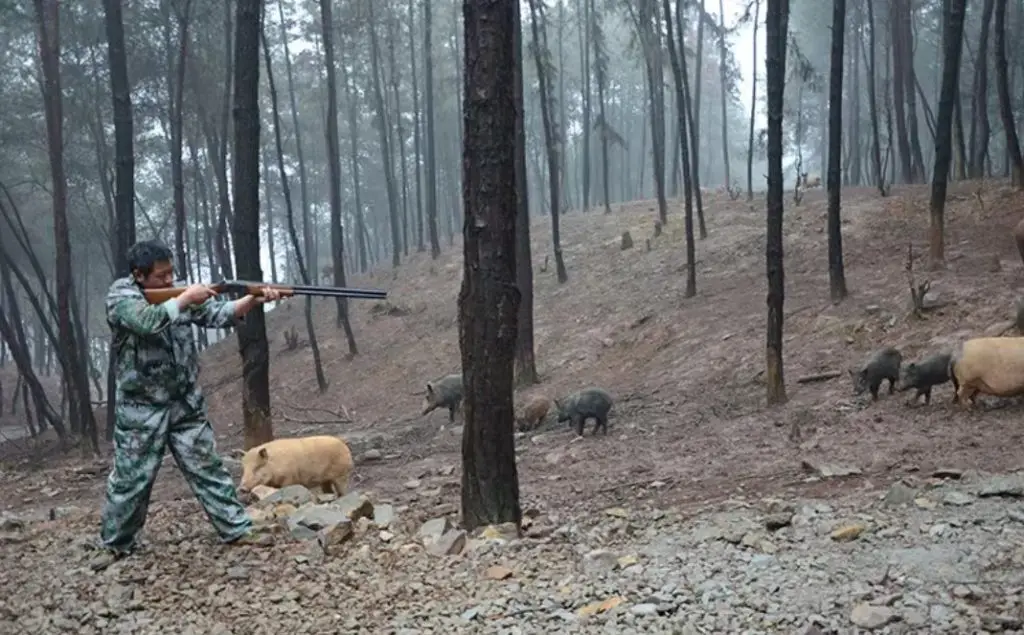Come on an exciting journey into the heart of hunting in China! In this article, we’ll give you all the info you need to know about this traditional pastime.
Find out where hunting is allowed, how they take care of the wildlife, and which animals you can hunt. Get ready for some real adventures, as we explore the thrill of chasing majestic deer and sneaky wild boars.
Get inspired by the stories of fellow hunters who’ve experienced the magic of hunting in this amazing country!
Does China Allow Hunting?
Hunting in China is mostly illegal, and Chinese law does not allow individuals to possess lethal weapons, including BB guns, which are also restricted. However, in rural areas, some limited hunting may still occur, particularly for smaller creatures like bunnies. Since firearms are banned in China, traps may be used for hunting purposes.
Legal Hunting: While most forms of hunting, especially for protected and endangered species, are illegal and heavily protected in China, there are a few exceptions.
There are still a few legal hunting grounds in the country, such as the Taoshan International Gameland. Here, travelers can participate in hunting certain animals responsibly, without endangering rare species. However, they must adhere to strict controls and pay for the hunting experience.

| Year | Location | Establishment | Membership Fee | Target Animals | Regulations |
|---|---|---|---|---|---|
| 1984 | Yichun City, Heilongjiang Province | Taoshan International Hunting Ground | N/A | N/A | N/A |
| 2015 | Mianyang City, Sichuan Province | Hunting ground in Mianyang City | 100,000 yuan per year | Wild boars, rabbits, pheasants, hedgehogs (all captive-bred) | Strictly follows firearm management rules |
| After 1984 | Xinjiang, Qinghai, Sichuan, and more | Multiple hunting grounds | N/A | Various, not specified | N/A |
Wildlife Conservation: Many animals that were traditionally hunted, including pandas, tigers, monkeys, and sheep, are now heavily protected and close to extinction. In rural areas, some limited hunting may still occur, particularly for smaller creatures like bunnies. Since firearms are banned in China, traps may be used for hunting purposes.
Fishing: Fishing, on the other hand, is more common and widely accepted in China. It is generally permitted in lakes and rivers without much government management. However, Fishing without a license is technically illegal, but there is currently no formal institution for fishing licenses.
Cost and Accessibility: Hunting is described as expensive in China, much more costly than skiing. It is considered less accessible due to limited opportunities and the higher expenses involved.
What Animals Can You Hunt in China?

- Tian Shan Argali
- Sair Argali
- Littledale Argali
- Marco Polo Argali
- Gansu Argali
- Gobi Argali
- Altai Argali
- Chinese Blue Sheep
- Helan mountain Blue Sheep
- Himalayan Blue Sheep
- Dwarf Blue Sheep
- Golden Takin
- Sichuan Takin
- Yarkand Goitered Gazelle
- Hillier Goitered Gazelle
- Tibetan Gazelle
- Mid Asian Ibex
- Gobi Ibex
- Tien Shan Wapiti
- Manchurian Wapiti
- Manchurian Sika Deer
- Gansu Red Deer
- White-Lipped Deer
- Chinese Sambar
- West Chinese Tufted Deer
- Chinese Muntjac
- Chinese Roe Deer
- Wild Boar
Duck Hunting in China
The “List of Terrestrial Wildlife with Important Ecological, Scientific, and Social Value Protected by the State” is a document established based on the “Wildlife Protection Law of the People’s Republic of China (Revised in 2018)”.
The term “Three Haves” refers to terrestrial wildlife that the country protects due to their significant ecological, scientific, and social value.
On June 30, 2023, the National Forestry and Grassland Administration announced the updated “List of Terrestrial Wildlife with Important Ecological, Scientific, and Social Value.” The revised list now includes 1,924 species of wildlife, comprising 91 mammal species, 1,028 bird species, 450 reptile species, 253 amphibian species, 96 insect species, 2 arachnid species, and 4 myriapod species.
Compared to the original list published in 2000, the updated one retains most of the original species while adding more than 700 new ones, significantly expanding the scope of wildlife protection. However, wild boars have been removed from the list.

Among the species included in the list, various duck species are protected.
- Mandarin Duck
- Northern Pintail
- Common Teal
- Green-winged Teal
- Baikal Teal
- Common Eider
- Northern Shoveler
- Gadwall
- Cinnamon Teal
- Red-breasted Merganser
- White-cheeked Pintail
- Northern Shoveler (Anas clypeata)
- Red-billed Teal
- Red-crested Pochard
- Canvasback
- Bufflehead
- Tufted Duck
- Harlequin Duck
- Long-tailed Duck
- Common Goldeneye
- White-winged Scoter
- Common Eider (Somateria mollissima)
- Common Merganser (Mergus merganser)
According to Article 341 of the “Criminal Law of the People’s Republic of China”:
- “Illegal Hunting Crime”: Engaging in hunting in prohibited hunting areas, during forbidden hunting periods, or using prohibited tools or methods to hunt, resulting in significant damage to wildlife resources, will be punishable by imprisonment for up to three years, detention, control, or a fine.
- “Illegal Capture, Purchase, Transportation, or Sale of Terrestrial Wildlife Crime”: Violating wildlife protection regulations by illegally capturing, purchasing, transporting, or selling terrestrial wildlife species, not covered by the exceptions, for the purpose of consumption in natural habitats, will be penalized according to the aforementioned provisions if the offense is severe.
Real Hunting Experience in China
In this episode of the “Fieldsports Channel,” viewers are taken on a captivating journey to explore the realm of hunting in China. The team embarks on an exciting adventure, delving into the unique and somewhat enigmatic aspects of the country’s hunting culture.
The focus of the episode centers on a hunting reserve owned by Erik van der Horst, a wealthy petrochemicals tycoon. Despite the common belief that hunting is prohibited in China, this reserve stands as an intriguing exception, offering a glimpse into the world of Chinese hunting.
Throughout the show, the team sets out on thrilling hunting trips within Erik’s reserve, seeking a variety of game, from majestic pheasants and elusive muntjac deer to nimble goats and cunning rabbits. The reserve provides ample opportunities for exciting pursuits, and the team immerses viewers in the heart-pounding action.
The episode also explores the world of Chinese hunting equipment production, with a visit to a factory where innovative gear is crafted to attract pigeons, crows, and ducks. The ingenuity and craftsmanship of Chinese hunters are on full display as they create essential tools for their pursuits.
As the journey unfolds, the team encounters the unique challenges faced by hunters in China. From lightning-fast stalks to the occasional misfires with shotguns, the world of Chinese hunting presents its own set of obstacles that demand skill and adaptability.
One striking aspect of Chinese hunting is the strong connection to food. Throughout the episode, the team discovers that hunting is not only a thrilling pursuit but also a social event, deeply rooted in the tradition of sharing a meal. Hunters emphasize the importance of consuming everything they catch, forging a close bond with nature and nourishment.
Throughout the expedition, the team encounters a sense of ambiguity surrounding the legality of hunting in China. While some regions seem to tolerate hunting, others impose strict restrictions on firearms possession. The team proceeds with caution, ensuring that they navigate this uncertainty responsibly.
China has many lesser-known places worth exploring, including dark tourism sites,the origin of the COVID-19 pandemic in Wuhan and dog festival offering travelers unique insights into history and contemporary significance.

